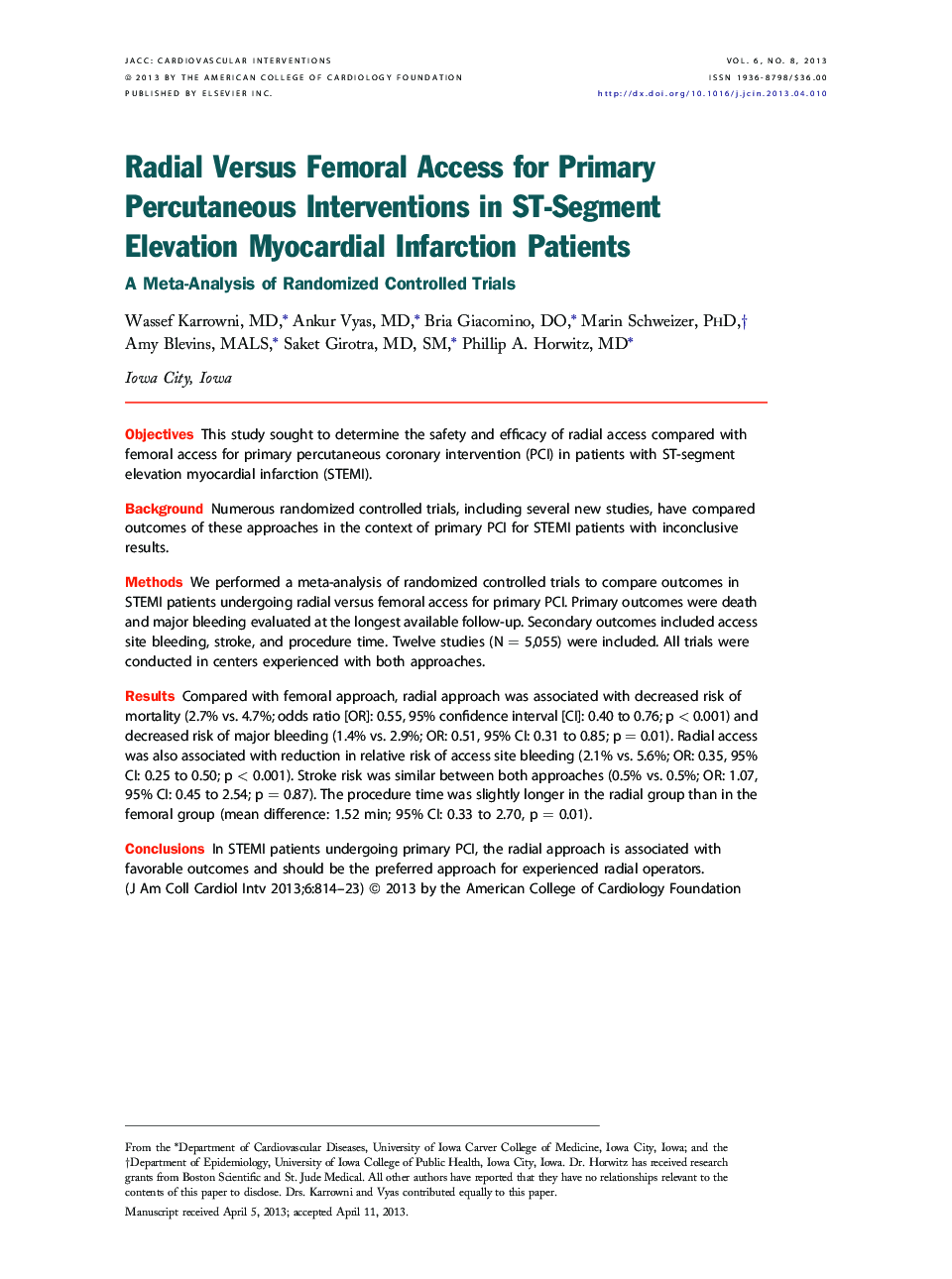| کد مقاله | کد نشریه | سال انتشار | مقاله انگلیسی | نسخه تمام متن |
|---|---|---|---|---|
| 2940537 | 1177036 | 2013 | 10 صفحه PDF | دانلود رایگان |

ObjectivesThis study sought to determine the safety and efficacy of radial access compared with femoral access for primary percutaneous coronary intervention (PCI) in patients with ST-segment elevation myocardial infarction (STEMI).BackgroundNumerous randomized controlled trials, including several new studies, have compared outcomes of these approaches in the context of primary PCI for STEMI patients with inconclusive results.MethodsWe performed a meta-analysis of randomized controlled trials to compare outcomes in STEMI patients undergoing radial versus femoral access for primary PCI. Primary outcomes were death and major bleeding evaluated at the longest available follow-up. Secondary outcomes included access site bleeding, stroke, and procedure time. Twelve studies (N = 5,055) were included. All trials were conducted in centers experienced with both approaches.ResultsCompared with femoral approach, radial approach was associated with decreased risk of mortality (2.7% vs. 4.7%; odds ratio [OR]: 0.55, 95% confidence interval [CI]: 0.40 to 0.76; p < 0.001) and decreased risk of major bleeding (1.4% vs. 2.9%; OR: 0.51, 95% CI: 0.31 to 0.85; p = 0.01). Radial access was also associated with reduction in relative risk of access site bleeding (2.1% vs. 5.6%; OR: 0.35, 95% CI: 0.25 to 0.50; p < 0.001). Stroke risk was similar between both approaches (0.5% vs. 0.5%; OR: 1.07, 95% CI: 0.45 to 2.54; p = 0.87). The procedure time was slightly longer in the radial group than in the femoral group (mean difference: 1.52 min; 95% CI: 0.33 to 2.70, p = 0.01).ConclusionsIn STEMI patients undergoing primary PCI, the radial approach is associated with favorable outcomes and should be the preferred approach for experienced radial operators.
Journal: JACC: Cardiovascular Interventions - Volume 6, Issue 8, August 2013, Pages 814–823